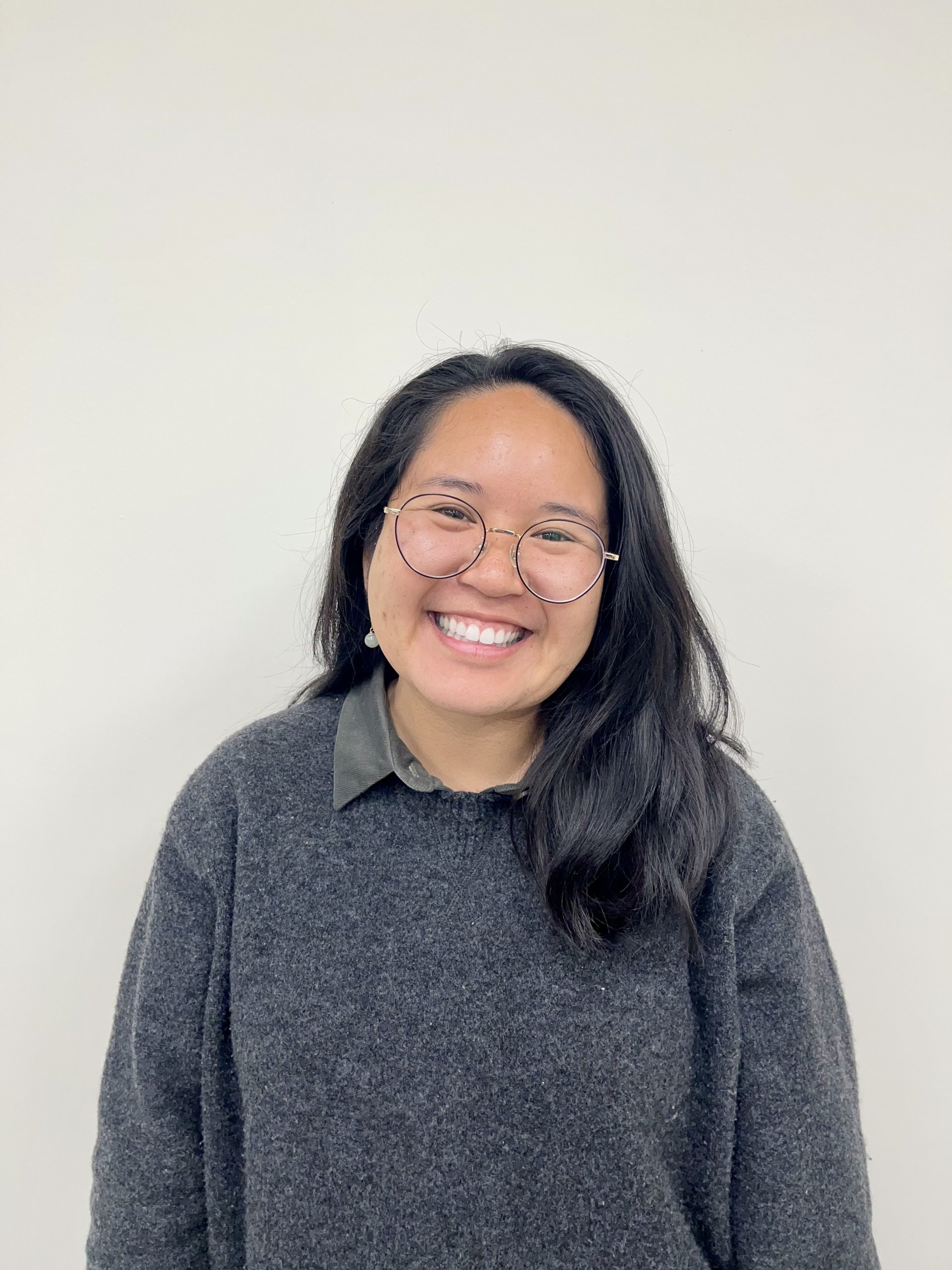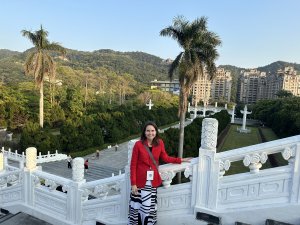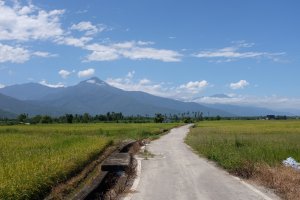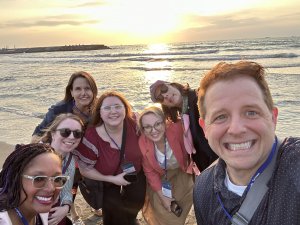A Reflection to Commemorate Asian American Pacific Islander (AAPI) Heritage Month.
Before coming to Taiwan, I did not expect Taiwan to be where I would reconnect so much with my home culture, Hawai’i.
Throughout this year in Taiwan as a TEFL Advisor, I found that some of my experiences as a young Hawaiian girl were also felt by others 5,200 miles across the Pacific Ocean. The views I have seen growing up and the mixed traditions I have lived share a similar thread with those here. Memories such as comparing pictures of our flower garlands (lei po’o in Hawaiian and aputr in Puyuma language) with a coworker from the Puyuma tribe… Meeting a stranger from the Amis tribe who gave me a honi, a kiss on the left cheek as a greeting… Walking around and seeing wooden canoes, beautifully woven artifacts, shells, feathers, and plants as jewelry, patterned body tattoos, vibrant colors, the moai (megaliths also found in Rapa Nui), the taro patches… Hearing a familiar language on the local train that sounds very similar to my mother’s native language from the Philippines… Seeing preservation and revitalization efforts of the indigenous languages and cultures here… Stumbling upon so many pieces of my hometown here in Taiwan intrigued me, which made sense when I eventually discovered that my home culture and ancestors may have originated from here, too [1]. The reality of being connected to Taiwan and its people here more deeply was an exciting discovery for me.
My time thus far has been a time of discovery, but it was also a time of personal reconciliation. As a current English teacher and teacher trainer, the words from former childhood teachers still haunt me over the years.
“Learn how to speak proper English or else they’ll think you’re stupid….” “It’s not pronounced ‘da’ /də/, it’s ‘the’ /θə/….”
“Don’t study Hawaiian, but choose something more useful for your future, like Spanish or Japanese….”
“No one speaks Hawaiian anymore – it’s a dying language….”
Growing up, I went to an indigenous high school in Hawai’i called Kamehameha Schools, a school for Native Hawaiian students that focuses on the preservation, education, and revitalization of the Hawaiian language, culture, and traditions. I was taught to love and embrace this part of my heritage, but I was also taught to abide by other rules as well, such as “speak proper English.” The common language spoken among locals in Hawai’i is Hawaiian Pidgin
(also known as Hawaiian Creole English). Others perceived this way of speaking as uneducated and unintelligent, and could be a disadvantage if you decided to work outside of Hawai’i. It seemed like an injustice to me that a tongue and people could be considered subpar, and I took it upon myself not to conform to this preconceived notion.
At that time, I had no idea I would find myself in the English teaching field where I would have to “speak proper English.” With the words of my former teachers in mind, I often wondered: How do I bring both – expertise in English language teaching and my fully authentic pacific islander heritage – together? For many years, I was anxious that choosing to embody a part of my islander heritage would somehow discredit me or that my Hawaiian Pidgin would accidentally slip out in conversation, invalidating the quality of my English instruction and training.
I finally found the answer to this question through my work as a teacher trainer in Taiwan. As a language educator, I have the power to teach English as the lingua franca, the world language, and tool of communication, rather than English as a superior, imperialistic language. We can emphasize the worth of other languages, regardless of how known or spoken those languages are. We can guide students in seeing the beauty of their English accents as a reminder of their mother tongue and cultural heritage. We have the ability to highlight the valuable and irreplaceable contribution of our non-native English-speaking teachers and counteract the native speaker bias that pervades Asia. But more specifically, as an indigenous language educator, I realized my experiences do inform my teaching and training.
As an indigenous person and an English language educator, I can engage with indigenous communities and community development education as both an outsider and an insider. As someone who once knew how to speak Hawaiian but lost the language, I can identify with the pressures and challenges individuals face regarding language and culture preservation. To those affected by perceptions based on your accent, your accent or language ability is NOT an indication of your intelligence. Instead, your ability to speak multiple languages reflects a high level of linguistic and social intelligence.
As an indigenous person and an English language educator, I also bring more representation of fellow Pacific island and indigenous folk to the education field. I want to bring these groups to the forefront of meaningful discussions and mitigate the socioeconomic gap between indigenous groups and others. I want to encourage them to stay strong and resilient, just as I and my people also had a colonial history.
As an indigenous person and an English language educator, I can be a bridge and help build more inclusive learning environments which encourage both teachers and students who are Taiwanese, aboriginal, or foreign to share their own cultures, learn from each other, and build deeper relationships with others outside of their spheres. As J. William Fulbright would say, “To bring a little more knowledge, a little more reason, and a little more compassion into world affairs and thereby increase the chance that nations will learn at last to live in peace and friendship.”
After many years of questioning my contribution as an indigenous English teacher, I finally walk away with a clearer answer to what I can bring: living with more regard for my fellow neighbors and distant family across the ocean.
I am profoundly grateful for my experiences in Taiwan through this program and look forward to what new adventures will arise soon.
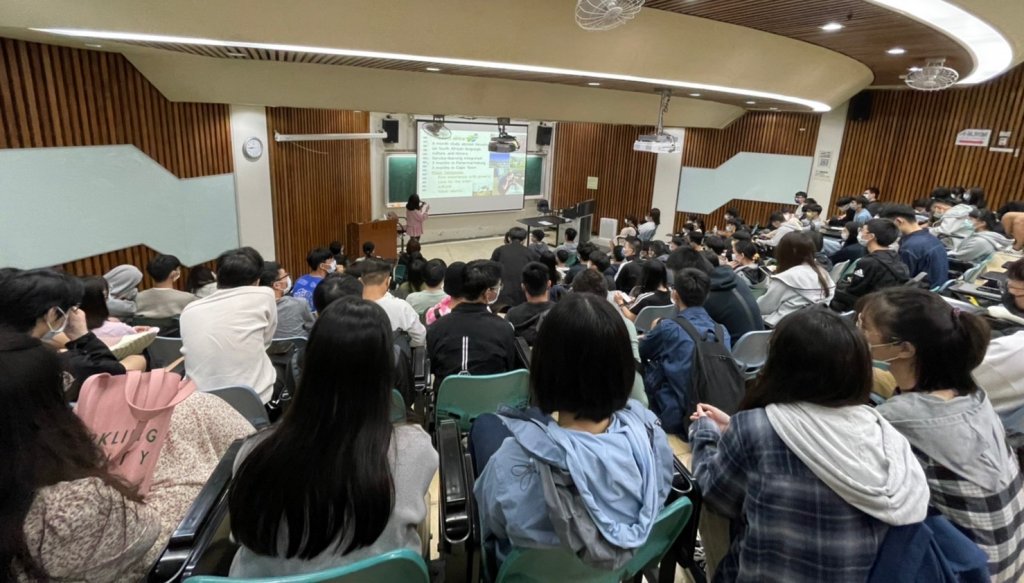

Notes:
*[1] The Austronesian Expansion Theory is a theory about the origin of the Austronesian people, claiming Taiwan as the origin.
For more information on the Austronesian Migration:
Matisoo-Smith, E.A. (2015). Tracking Austronesian expansion into the Pacific via the paper mulberry plant. Proceedings of the National Academy of Sciences (PNAS), 112(49), 15292–15296. https://doi.org/10.1073/pnas.1518576112.
A Documentary Series by National Geographic and Amis artist Yosifu:
Managing Editor: Chih-Hsuan Tsao 曹芷瑄

